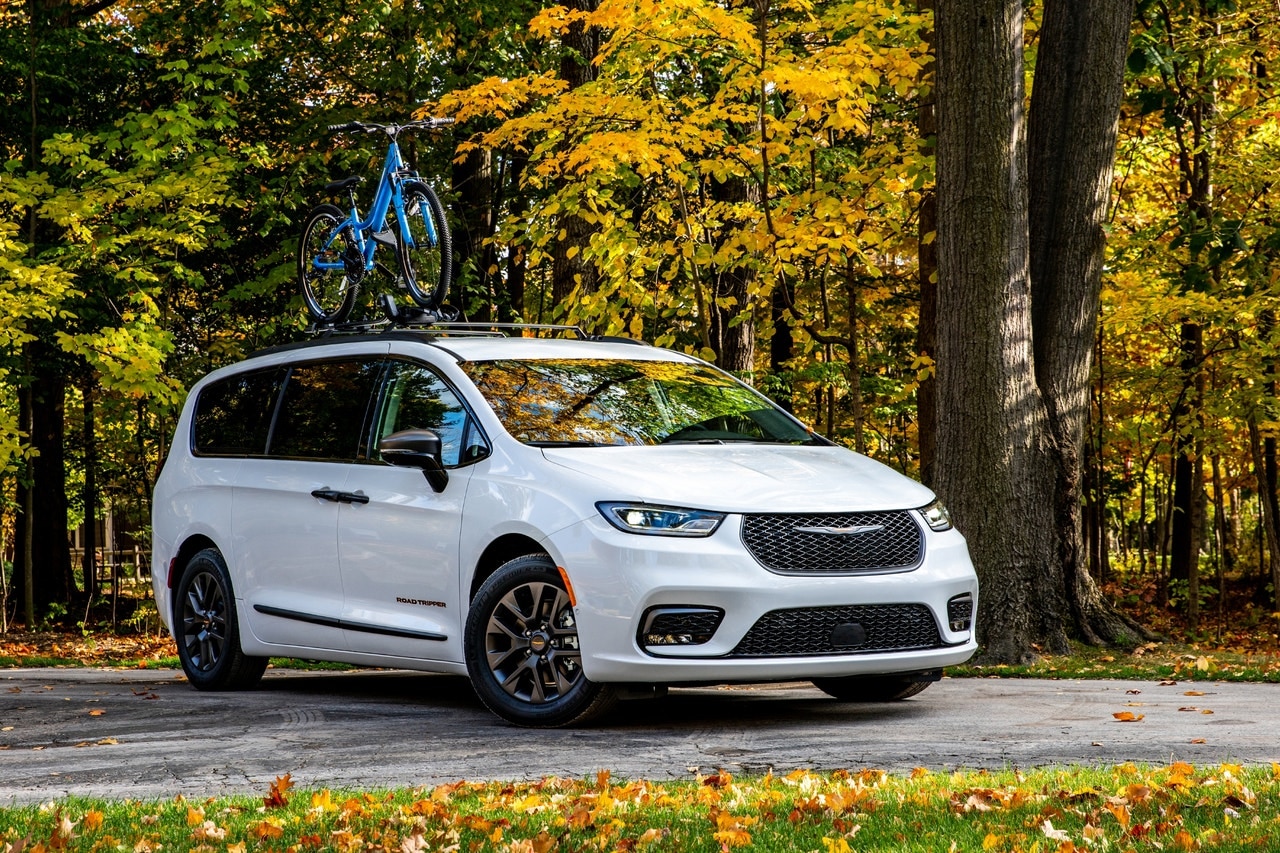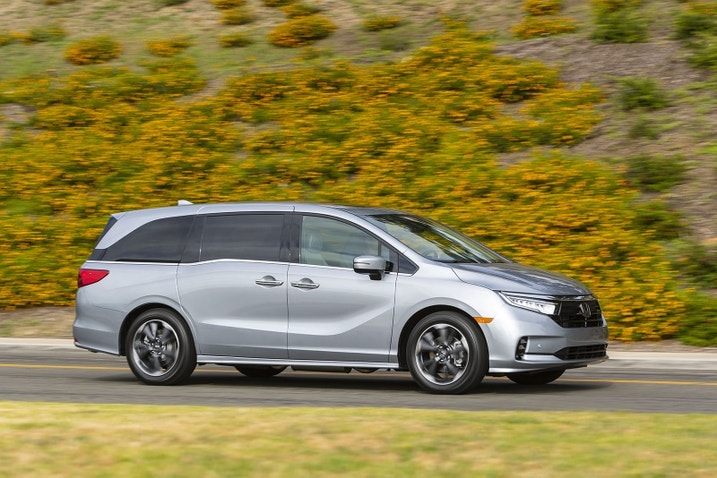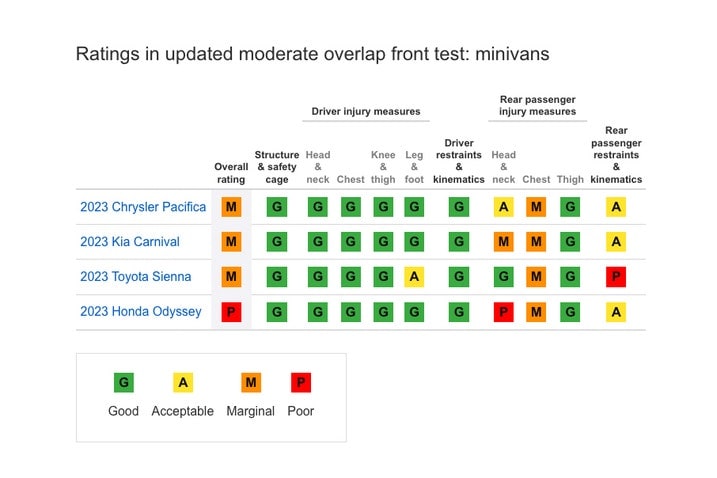- An IIHS study finds that four popular vans aren't meeting its standards for a crash test.
- The Chrysler Pacific, Kia Carnival, Toyota Sienna and Honda Odyssey all fail to meet the bar set by the IIHS.
- Restraint systems in all four vans leave rear occupants vulnerable to chest injuries.
IIHS Finds Minivans Are Terrible at Protecting Rear Passengers
Minivans aren't great at protecting what matters most to their buyers: rear passengers
New testing by the IIHS shows that a number of the most popular minivans on the market aren’t cutting it when it comes to rear seat safety. Not one of the vans tested by the IIHS meets the institute's standards for the updated moderate overlap front crash test. The updated test places more of an emphasis on rear safety, which is naturally a major area of consideration among family vehicle shoppers.
According to the study, the Chrysler Pacifica, Kia Carnival and Toyota Sienna are rated Marginal. The Honda Odyssey is rated even worse at Poor. Moreover, the IIHS finds that none but the Sienna come equipped with rear seat-belt reminders.
The updated front overlap test was launched last year in response to findings that in new vehicles, the risk of fatal injury for rear occupants was higher than for those in front. It’s important to note the Institution does not believe this is because second rows are now less safe. Instead, “the front seat has become safer because of improved airbags and advanced seat belts that are rarely available in [the] back.”
For a vehicle to earn a Good rating, a handful of criteria have to be met. In the overlap crash scenario, there cannot be severe injury to the head, neck, chest or thighs on the second-row dummy. A dummy also cannot “submarine” under its belt in a crash, while the head has to be a safe distance from the rest of the vehicle interior. The Odyssey fared the worst on paper, and in the crash the rear dummy experienced significant head and neck trauma.
It’s worth noting that these vans scored poorly in one of many categories, and while the issues pointed out by the IIHS are valid, the vans scored well in many of the other categories referenced in the chart below.
“The restraint systems in all four vehicles leave the second-row occupant vulnerable to chest injuries, either because of excessive belt forces or poor belt-positioning,” said Jessica Jermakian, IIHS vice president of vehicle research. “That’s concerning because those injuries can be life-threatening.”
Edmunds says
While it’s a little concerning to see such weaknesses in family cars, uncovering the weaknesses of various cars through testing helps brands put out safer products.



 by
by 
